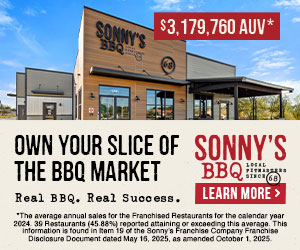Clicks, Bricks, or Both?

As retailers across the globe confront the undeniable impact of e-commerce, it’s critical to remain forward-thinking and adaptable. Our journey into the future of “bricks and clicks” must be strategic, and our approach data-driven. Let’s delve into how we can uphold the viability of brick-and-mortar locations in this digital era.
Strategies to mitigate e-commerce’s impact on physical retail
In Q1 2023, e-commerce sales accounted for 15.1% of total retail sales, up from 6.1% in Q1 2014, according to a report by the U.S. Census Bureau. This rapid rise signals a pivotal change in consumer behavior, necessitating an evolution of our physical retail spaces. Yet, even as online sales rise, brick-and-mortar stores offer what online shopping often lacks: a tangible, immediate, and interactive experience. The key to mitigating the e-commerce impact lies in amplifying these inherent strengths. This brings us to our first strategy: creating unique in-store experiences.
The importance of unique in-store experiences
Franchises can stand out from their e-commerce counterparts by offering memorable in-store experiences. Think exclusive events, hands-on demonstrations, or product tastings. For instance, Apple Stores offer free workshops and Genius Bar appointments, which serve as both an educational resource and a value-added service for customers.
Additionally, consider the rise of food delivery platforms like Postmates, Uber Eats, and DoorDash. They’ve transformed the restaurant industry, making dining an experience that extends beyond physical locations. But savvy restaurateurs have adapted, incorporating these services into their business model by aligning their brand with their to-go materials, while also enhancing their in-restaurant dining experience, all in an effort to leave a memorable impression on their patrons.
Versatile spaces: the future of real estate
The future belongs to flexible and versatile spaces. As consumer behavior shifts, so should the function of our real estate. For example, consider the success of hybrid spaces, which combine retail, co-working, and event spaces under one roof. Such businesses can maximize foot traffic throughout the day and diversify their revenue streams, offering resilience in the face of e-commerce trends.
On a smaller scale, consider how franchises can adapt their space to meet changing demands. A coffee shop could transform into a wine bar in the evening. A retail store might host pop-up events or offer shared working spaces during off-peak hours. In these ways, a single location can serve multiple purposes, making it both versatile and resilient.
A testament to this growing trend is the rise of ghost kitchens. These are professional food preparation and cooking facilities set up to produce delivery-only meals, often hosted by delivery services like Postmates, Uber Eats, and DoorDash. As dine-in experiences have been drastically affected by the pandemic and the subsequent e-commerce boom, many restaurants are leveraging these facilities to reduce overhead, remain flexible, and continue to serve their customer base.
Ghost kitchens are transforming traditional restaurant spaces into versatile hubs that are efficient, cost-effective, and designed for the digital consumer. These shared spaces also create opportunities for businesses to test new markets and menu items without the substantial investment associated with traditional restaurant setups. This nimble approach can help businesses stay resilient in the face of uncertain economic climates.
In essence, the commercial real estate of the future will be those properties that can adapt quickly to accommodate changing retail needs and consumer behavior. Building versatility into your retail space—whether through adjustable interiors or accommodating for alternate business models like ghost kitchens—is a strategic move that can safeguard your business against further market disruptions.
Embracing technology: enhancing the in-store experience
Technology isn’t solely the realm of e-commerce. Brick-and-mortar stores can, and should, incorporate technology to enhance the customer experience. From self-checkout systems to interactive displays and augmented reality fitting rooms, technology can create a more engaging and personalized shopping experience.
For instance, some bookstores have started implementing interactive kiosks where customers can read reviews, check availability, or even order a hard-to-find title for delivery. This tech-forward approach serves as a value proposition, offering convenience and an enriched in-store experience that online platforms can’t fully replicate.
Location, location, location: more vital than ever
The age-old adage of “location, location, location” still holds in the e-commerce era, but with a renewed focus. A prime location is no longer just about foot traffic; it’s also about visibility and convenience in the age of same-day delivery services. Retailers should consider locations that are easily accessible for courier pickups, enabling efficient integration with platforms like Postmates, Uber Eats, or Instacart. A strategic location will allow your franchise to provide the quick service that today’s consumers expect, without sacrificing the benefits of a physical store.
Building community ties: beyond the transactional
Brick-and-mortar stores have a unique opportunity to forge strong community ties, an advantage e-commerce often lacks. By hosting local events, supporting local causes, or simply providing a gathering space for the community, franchises can cultivate goodwill and loyalty that go beyond a single transaction. This community-centered approach can turn customers into advocates, fostering a level of connection and loyalty that’s harder to achieve in the e-commerce realm.
The digital age is not inherently bad
In conclusion, while e-commerce has presented undeniable challenges to traditional retail, it also offers an impetus for innovation and evolution. By focusing on the unique strengths of physical stores—such as providing in-person experiences, utilizing versatile spaces, integrating technology, selecting strategic locations, and building community ties—franchises can not only survive, but thrive in this new retail landscape.
The future of real estate is not a battleground between brick-and-mortar and e-commerce, but a playing field where both can coexist and thrive. And that future is not just about being adaptable, but about being proactive and innovative in meeting the changing needs of consumers.
Jason Fefer is an associate director of Marcus & Millichap’s Net Leased Property Group on a large team alongside his partners Robert Narchi and Tyler Bindi. They structure sale-leasebacks and negotiate leases on behalf of some of the largest franchisees across all sectors including the restaurant, automotive, and retail space. He can be reached at 818-669-2388 or [email protected].
Share this Feature
Recommended Reading:
| ADVERTISE | SPONSORED CONTENT |
FRANCHISE TOPICS
- Multi-Unit Franchising
- Get Started in Franchising
- Franchise Growth
- Franchise Operations
- Open New Units
- Franchise Leadership
- Franchise Marketing
- Technology
- Franchise Law
- Franchise Awards
- Franchise Rankings
- Franchise Trends
- Franchise Development
- Featured Franchise Stories
| ADVERTISE | SPONSORED CONTENT |

$300,000
$211,400





 The multi-unit franchise opportunities listed above are not related to or endorsed by Multi-Unit Franchisee or Franchise Update Media Group. We are not engaged in, supporting, or endorsing any specific franchise, business opportunity, company or individual. No statement in this site is to be construed as a recommendation. We encourage prospective franchise buyers to perform extensive due diligence when considering a franchise opportunity.
The multi-unit franchise opportunities listed above are not related to or endorsed by Multi-Unit Franchisee or Franchise Update Media Group. We are not engaged in, supporting, or endorsing any specific franchise, business opportunity, company or individual. No statement in this site is to be construed as a recommendation. We encourage prospective franchise buyers to perform extensive due diligence when considering a franchise opportunity.